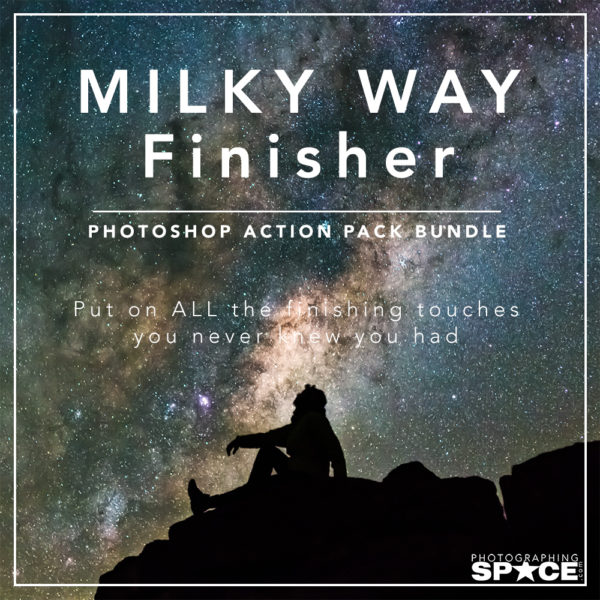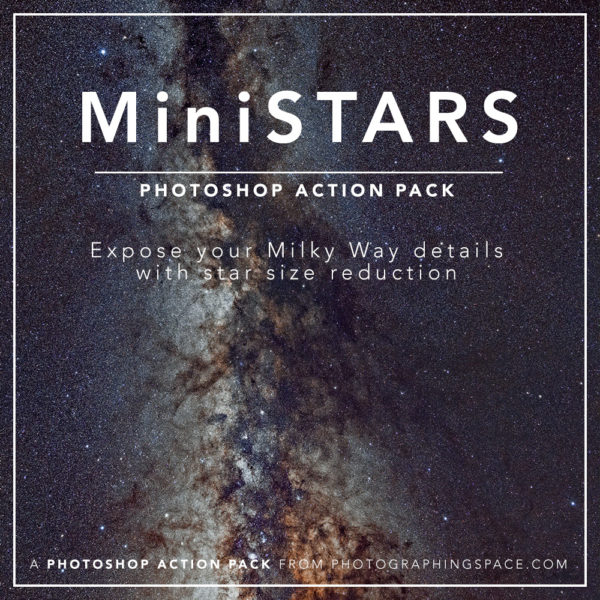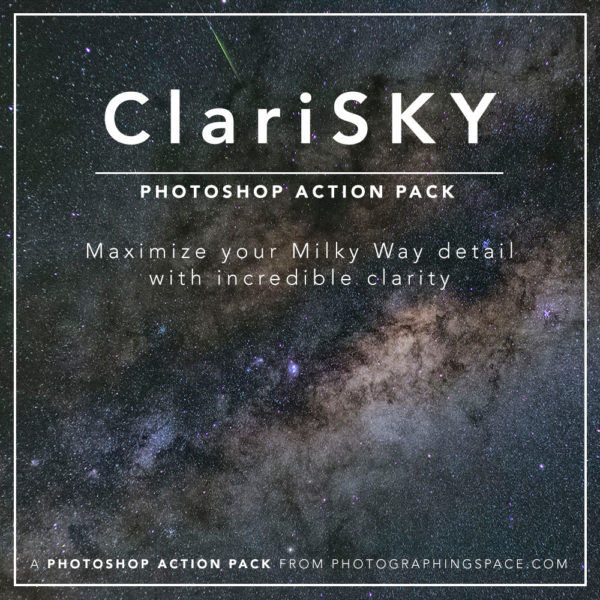Learn how to get perfect stars in your astro photos, or the rule of 500 …ish.
One of the questions I often get asked is “what exposure length did you use to capture that shot?” The problem is without knowing what lens you use, what camera you are shooting with, what direction in the sky you are targeting, and overall what your goal is, I can’t answer it definitively for your photos! I can tell you what I shot, but it doesn’t always tell you the answer you’re looking for, and it’s not always the rule of 500.
However, what I can do to help you with your shots is give you the proper tools to help choose an exposure length that gives you the sharpest stars for the conditions in which you are shooting. This is where the rule of 500 comes in…or does it? We’ve found that there is always an exception every rule, and to this one in particular.
In the end, this is why spending good money on a quality fast lens (F/2.8 or better) is so important, often more so than your camera body. Check out my article on why aperture is one of the most important factors for an astrophotography camera lens!
|
Why do round stars matter?
Photos with sharp round stars always look better, unless you are shooting star trails of course. Or, unless you are attempting to specifically show the movement of the stars in the sky over a short period of time (which is star trails…).
If your night composition doesn’t have round, sharp stars it can make the overall image look blurry, and the stars out of focus when they are likely not so, just trailed!

How it’s done – the rule of 500
The rule of 500 is a well-known way among astrophotographers to analytically determine the maximum exposure length you can use and still expect sharp, round stars in your photo, without trailing. It’s a simple equation, shown below, of which the only variable is your camera lens focal length, and the “magical” number of 500.
maximum exposure length (seconds) = 500 / focal length
For example, shooting on a full-frame camera with a 24mm lens (one of our favorite setups…), the rule gives a maximum exposure length of about 21 seconds.
~21 seconds = 500 / 24mm
It is important to note that you will need to divide this final result by 1.6 if you are using a camera with a crop-frame sensor (so, ~13 seconds), as the rule was designed for full-frame cameras.
Why the rule of 500 shouldn’t always be trusted
Because the rule was designed for cameras with full frame sensors, it is often not as useful for the beginners in the field it is actually meant for, since not many new astrophotographers start out with an expensive full-frame camera!
You could just simply divide the final number by 1.6, as mentioned above, but, even then…I’ve found the rule to merely be a starting point. Multiple test exposures are required to find the sweet spot. Even on my full-frame Canon 5D Mark III it depends on the lens type and sky location.
In my experience in the field, I’ve found that using 400 instead of 500 often provides a better result when shooting wider, like around 14-16mm, but I still have to play around to get that perfect exposure length that gives balance between enough light gathering and acceptable star roundness.
maximum exposure length (seconds) = 400 / focal length (for ~14-16mm)
We most often shoot with a 16mm or 14mm lens when we go wide, so from our field tests, this works:
~28 seconds = 400 / 14mm
~25 seconds = 400 / 16mm
For example, from field testing on a full-frame Canon camera and 14mm, 24mm, 35mm, and 50mm lens, the rule rarely can be taken at face value. Working backwards, though, I’ve been able to figure out some of the best exposure times for getting round stars at differing focal lengths, and the magical “rule of …”numbers that work instead of using 500. See the table below.
| Lens focal length (mm) | Full-frame, max exposure length (seconds) | Crop-frame, max exposure length (seconds) | Rule of ~N! |
| 12 | 35 | 22 | 420 |
| 14 | 28 | 18 | 400 |
| 16 | 25 | 16 | 400 |
| 24 | 21 | 14 | 500 |
| 35 | 15 | 10 | 525 |
| 50 | 10 | 7 | 500 |
Direction matters

If your target is in the north or south, the maximum exposure length can be slightly longer before star trails appear than if you were shooting towards the east or west. But why?
For example, look at a star trail image, particularly a circumpolar one — the stars farther away from the celestial poles (nearer the east or west) visually appear to “travel” a much farther distance than those nearer the celestial poles, due to parallax.
But WHY? Think about a wheel, or for simplicity’s sake, a merry-go-round. The kids sitting on the inside, nearer the center, are moving much slower than the kids sitting near the perimeter. The kids (stars) nearer the center (the celestial pole) and the perimeter (the meridian, or east/west) perceptively “move” vastly different distances in the same time period, even in that of a long photograph exposure.
Everything in the sky “moves” 360 degrees in ~24 hours, but the stars near the celestial poles (point of rotation) draw much shorter lines on the captured image in the same time period as the stars nearer the meridian (the east or west).
Shooting only for social media? Ignore this advice
Ignore this advice, and go ahead and push it. Shoot longer. But ONLY if you only care about social media. Your images will be seen on small screens, at low resolution, and the stars will appear to not trail.
Tanja and I call this “good enough for Instagram,” and joke about putting photos we don’t deem good enough for print or high-resolution online use.
Also, if you are shooting with the only end-result as a time lapse, you can also shoot a little longer because the motion of the final video will often hide unwanted trailing seen in static images.
In the end, artistic license wins
Disclaimer time! This article has been meant be a guide to start you out on your journey toward perfection. In order to find your own personal sweet spot for the amount of star trailing you can handle in your night-sky photography, you have to just get out there and shoot. A LOT.
You’ll soon find out what works with your camera and lens setup. Don’t ever take just one shot without a proper review on the LCD screen! Zoom in on it. Analyze and be picky, and try out all the different settings. It takes time, but it all pays off in the end!
Want to get relevant and timely night-sky photography and astrophotography tips like these, hand-picked by our team, delivered to you each week? Sign up for our weekly tips!








I worked out some math (because that’s the sort of thing I do).
Star trails exist as stars drift across the sky. This is about 360 degrees a day, which works out to 0.00417 degrees per second. The higher the focal length of the lens, the smaller the field of view, with a 12 mm lens having a full-frame field of view of 35.8 x 31.7 degrees and a 50 mm lens of 17.9 x 12.8 degrees. Combining those, it would take stars on the celestial equator nearly 2.4 hours to cross the sensor with a 12 mm lens and 1.2 hours to cross with a 50 mm lens.
The maximum exposure should theoretically relate to the percentage of the sensor that the stars drift across, which combines actual star drift and field of view.
The best practice works out to between a quarter of a percent (23/100 for 50 mm) to closer to a half of a percent (41/100 for 12 mm) of the sensor as acceptable drift before star trails. I’m not sure why this range exists, as I’d think it should be the same for point-like objects.
If we standardized on amount of stellar drift as relates to distance across the sensor, and set that value to precisely 1/4 of a percent of the sensor, the exposure time calculates as:
Focal Length – Max Exposure (full frame) – Max Exposure (crop frame)
12 mm – 21.5 s – 18.5 s
14 mm – 20.6 s – 17.4 s
16 mm – 19.8 s – 16.3 s
24 mm – 16.9 s – 12.9 s
35 mm – 13.7 s – 9.8 s
50 mm – 10.7 s – 7.2 s
Unfortunately, there’s no “rule of” that allows quick calculation of these numbers. (I’m working on it)
I’ll have to experiment to see how actual results compare to the math approach.
p.s. – I’d like to see a discussion of how to adjust ISO when using different focal length lenses.
Wow, Chris! That’s awesome. Idea — figure out the magical number, we’ll test it and write about it, and we’ll coin the term “Becke’s Law.” 🙂
this is cool, I didn’t know where the 500 rule came from. Thanks Cory and Chris, great info!
Thank you. I am enjoying your posts. I have been shooting the night sky for a couple years. I have terabytes of data, some good, some bad because of exposures which are too long. If you are ever near Minnesota we should arrange a meeting to share stories and pictures.
Thanks Mark! That’s great — we’ve been through so much trial and error as well!
Thanks for this info, I recently moved to big island Hawaii and I can see the observatories from my apartment. Soon I will be traveling to the top for night sky photography. Every bit helps to start this journey, with the eventual goal of deep sky.
Hi Sean,
It’s a pleasure! I hope it helps.
Best of luck on your journey!
Cheers,
Cory
Cory,
I think that 400, 500 or 600 rules are just round figure rules to get you a good and acceptable results.
but I think the perfect equation should include the effect of the sensor’s size, resolution and the focal length.
Because as the number of pixels increase, the probability of having star trails increases also.
[…] to your exposure calculations. For crop-frame cameras, divide your calculated exposure time by 1.6 for exposure to prevent unwanted star […]